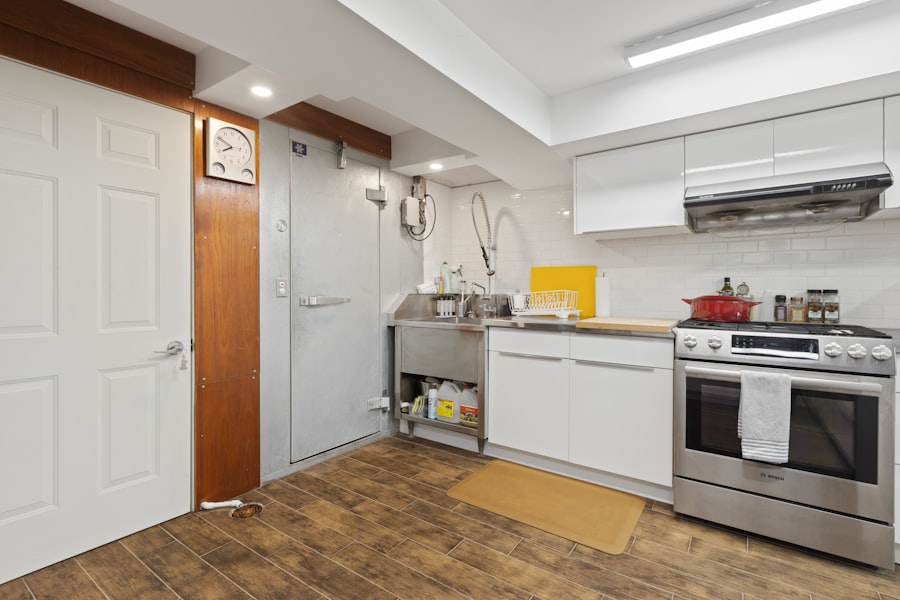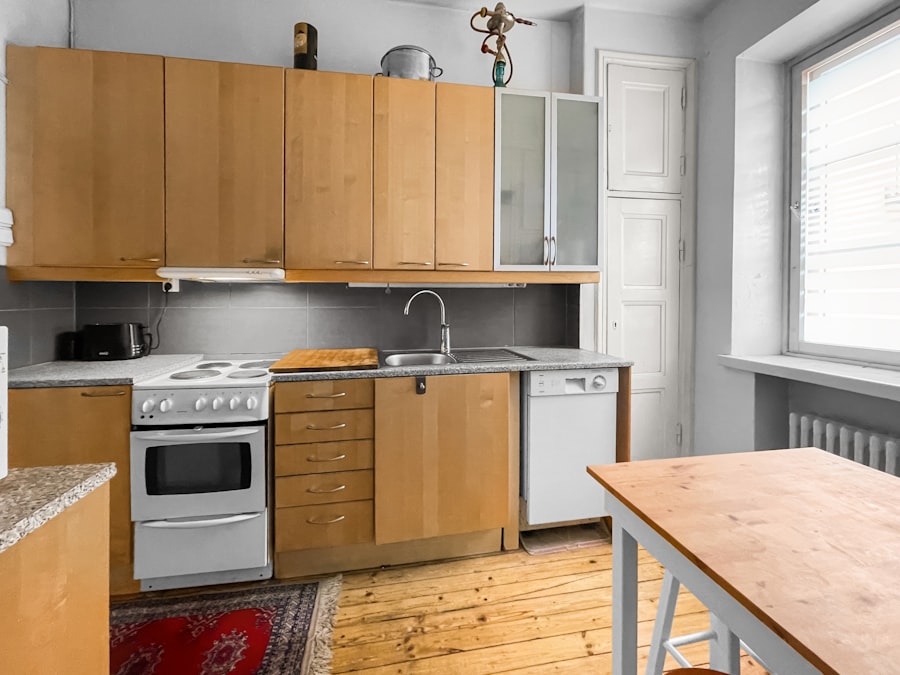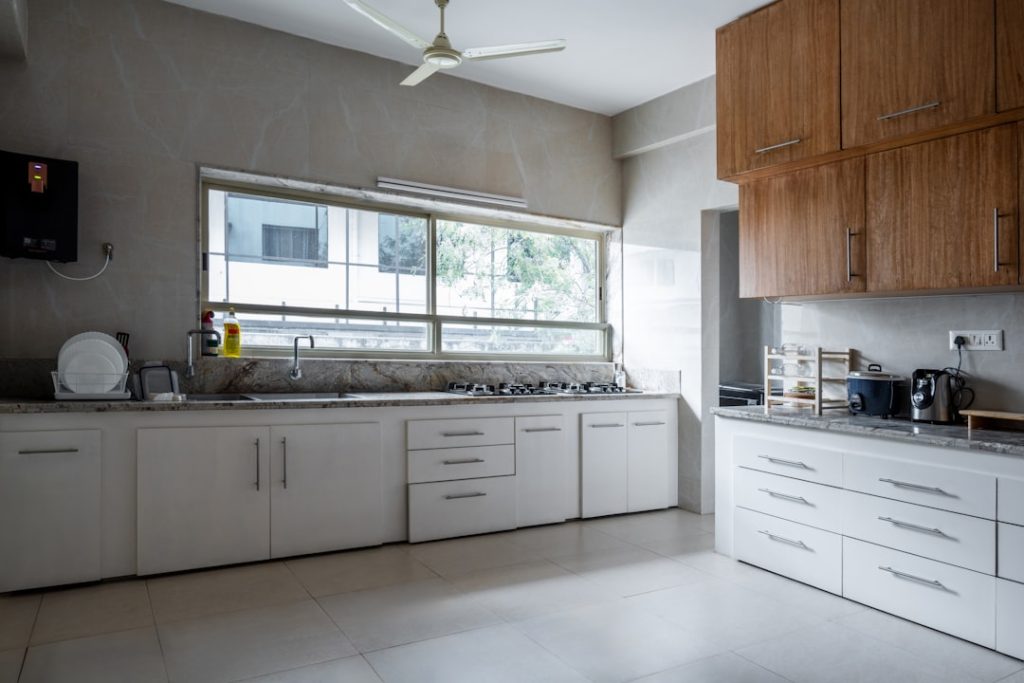The average cost of a kitchen renovation can vary significantly based on a multitude of factors, including the size of the kitchen, the extent of the renovation, and the materials chosen. On average, homeowners in the United States can expect to spend anywhere from $15,000 to $50,000 for a mid-range kitchen remodel. This range encompasses a variety of projects, from minor updates such as new countertops and cabinet refacing to more extensive renovations that involve structural changes and high-end finishes.
For luxury renovations, costs can soar well above $100,000, particularly in metropolitan areas where labor and materials are more expensive. Understanding these costs is crucial for homeowners contemplating a kitchen renovation. It is not merely about the price tag; it involves a careful consideration of what is included in that cost.
For instance, a budget-friendly remodel might focus on cosmetic changes, while a more comprehensive renovation could involve plumbing and electrical work, which can significantly increase expenses. Additionally, the average cost can fluctuate based on regional differences; urban areas often see higher costs due to increased demand for skilled labor and premium materials. Therefore, it is essential to conduct thorough research and obtain multiple quotes to gauge a realistic budget for your specific project.
Key Takeaways
- Kitchen renovation costs vary widely based on size, materials, and design choices.
- Key factors influencing cost include labor, appliances, cabinetry, and layout changes.
- Budgeting carefully and accounting for hidden expenses can prevent overspending.
- Hiring professionals typically costs more than DIY but ensures quality and efficiency.
- Saving money is possible through smart material choices, reusing elements, and prioritizing upgrades.
Factors that Influence the Cost of Kitchen Renovation
Several key factors influence the overall cost of a kitchen renovation, each contributing to the final price in unique ways. One of the most significant factors is the size of the kitchen itself. Larger kitchens typically require more materials and labor, which can drive up costs.
For example, a small kitchen renovation might involve replacing cabinets and countertops for around $15,000, while a larger space could easily exceed $30,000 for similar updates due to the increased square footage and additional materials needed. Another critical factor is the choice of materials. High-quality materials such as granite or quartz countertops, custom cabinetry, and premium flooring can substantially increase costs compared to more budget-friendly options like laminate or vinyl.
For instance, while laminate countertops may cost around $20 per square foot, granite can range from $50 to $100 per square foot or more. Additionally, appliances play a significant role in the overall budget; opting for high-end brands or energy-efficient models can add thousands to the total cost. Homeowners must carefully consider their priorities and how much they are willing to invest in each aspect of their kitchen renovation.
Budgeting for Your Kitchen Renovation

Creating a realistic budget for a kitchen renovation is essential for ensuring that the project remains financially feasible. A well-structured budget should account for all aspects of the renovation process, including materials, labor, permits, and unexpected expenses. It is advisable to start by determining a total budget based on personal finances and potential financing options.
Once a figure is established, homeowners can allocate funds to different categories such as cabinetry, countertops, appliances, flooring, and labor. In addition to these primary categories, it is wise to set aside a contingency fund—typically around 10% to 20% of the total budget—to cover unforeseen expenses that may arise during the renovation process. These could include issues like hidden water damage or outdated electrical systems that need upgrading.
By planning for these contingencies upfront, homeowners can avoid financial strain and ensure that their renovation project stays on track without compromising on quality or design.
When it comes to kitchen renovations, homeowners often face the decision of whether to hire professionals or tackle the project themselves. Each option has its own set of advantages and disadvantages that can significantly impact costs. Hiring professionals—such as contractors, designers, and specialized tradespeople—can provide expertise and ensure that the work meets local building codes and standards.
However, this convenience comes at a price; labor costs can account for 20% to 35% of the total renovation budget. On the other hand, opting for a DIY approach can lead to substantial savings on labor costs. Homeowners who possess skills in carpentry, plumbing, or electrical work may find that they can complete certain tasks themselves without incurring additional expenses.
However, it is crucial to recognize that DIY renovations can also lead to hidden costs if mistakes are made or if specialized tools are required. For example, while installing cabinets may seem straightforward, improper installation can result in costly repairs down the line. Therefore, homeowners must weigh their skills against potential risks when deciding between hiring professionals or taking on a DIY project.
Hidden Costs to Consider in Kitchen Renovation
| Hidden Cost | Description | Estimated Percentage of Total Budget | Impact on Timeline |
|---|---|---|---|
| Structural Repairs | Fixing issues like damaged beams, flooring, or walls discovered during renovation | 10-20% | 1-2 weeks |
| Permits and Inspections | Costs for obtaining necessary permits and passing inspections required by local authorities | 2-5% | Varies, usually 1 week |
| Plumbing and Electrical Upgrades | Updating outdated plumbing or electrical systems to meet current codes and needs | 8-15% | 1-3 weeks |
| Design Changes | Additional costs from last-minute design modifications or upgrades | 5-10% | Varies |
| Disposal and Cleanup | Removal of old materials and debris, plus final cleaning | 1-3% | 1-2 days |
| Temporary Kitchen Setup | Costs for setting up a temporary cooking area during renovation | 2-4% | Duration of renovation |
| Unexpected Material Price Increases | Fluctuations in cost of materials like wood, tiles, or appliances | 3-7% | Varies |
| Labor Overtime | Extra charges if work extends beyond scheduled hours | 2-6% | Varies |
While budgeting for a kitchen renovation, many homeowners overlook hidden costs that can arise during the process. These expenses can quickly add up and derail even the most carefully planned budgets. One common hidden cost is related to structural changes; if walls need to be moved or removed, this may require additional permits and inspections that can add hundreds or even thousands of dollars to the overall cost.
Additionally, if plumbing or electrical systems need upgrading to accommodate new appliances or layouts, these modifications can also lead to unexpected expenses. Another often-overlooked cost is related to finishing touches and accessories that enhance functionality and aesthetics but are not always included in initial estimates. Items such as cabinet hardware, lighting fixtures, backsplash tiles, and even paint can contribute significantly to the final bill.
Homeowners should also consider costs associated with temporary living arrangements if the kitchen will be unusable during renovations; this could include dining out more frequently or renting an alternative space. By anticipating these hidden costs upfront, homeowners can create a more accurate budget and avoid financial surprises during their kitchen renovation.
Ways to Save Money on Your Kitchen Renovation
Saving money on a kitchen renovation does not necessarily mean sacrificing quality or design; there are numerous strategies homeowners can employ to keep costs down while still achieving their desired results. One effective approach is to prioritize cosmetic updates over structural changes. For instance, instead of completely gutting the kitchen and starting from scratch, consider repainting cabinets instead of replacing them or updating hardware for a fresh look without significant expense.
Another way to save money is by shopping smart for materials and appliances. Homeowners can explore options such as purchasing from discount retailers or looking for sales during holiday weekends when many home improvement stores offer significant discounts. Additionally, considering alternative materials—such as quartz instead of granite or laminate flooring instead of hardwood—can yield substantial savings without compromising on style.
Furthermore, reusing existing fixtures where possible can also help reduce costs; for example, refinishing an old sink rather than buying a new one can save both money and resources.
Average Cost of Kitchen Renovation: Breakdown of Expenses

To gain a clearer understanding of where money goes during a kitchen renovation, it is helpful to break down average expenses into specific categories. According to industry estimates, cabinetry typically accounts for about 30% of the total budget; this includes both custom-built options and pre-fabricated cabinets. Countertops usually represent around 10% to 15% of costs; popular choices like granite or quartz can significantly influence this percentage based on quality and installation complexity.
Appliances are another major expense category; they often make up about 15% to 20% of the total budget depending on brand and features selected. Flooring choices can vary widely in cost but generally account for approximately 7% to 10% of expenses. Labor costs typically range from 20% to 35%, depending on whether professionals are hired or if homeowners choose a DIY approach.
Finally, miscellaneous expenses—including lighting fixtures, plumbing fixtures, backsplashes, and paint—can collectively add another 10% to 15% to the overall budget. Understanding this breakdown allows homeowners to make informed decisions about where they might want to allocate more funds or where they could cut back.
Tips for Maximizing Your Renovation Budget
Maximizing your kitchen renovation budget requires strategic planning and thoughtful decision-making throughout the process. One effective tip is to create a detailed project timeline that outlines each phase of the renovation; this helps ensure that tasks are completed efficiently without unnecessary delays that could lead to increased labor costs. Additionally, maintaining open communication with contractors or suppliers can help identify potential savings opportunities as they arise.
Another strategy involves focusing on high-impact areas that will yield significant returns on investment (ROI). For example, investing in energy-efficient appliances not only enhances functionality but also reduces long-term utility costs—a win-win situation for homeowners looking to maximize their budget. Furthermore, consider incorporating timeless design elements that will remain appealing over time rather than following fleeting trends; this approach ensures that your investment retains its value in the long run.
By employing these strategies and remaining flexible throughout the renovation process, homeowners can achieve their dream kitchens while staying within budgetary constraints. Ultimately, careful planning combined with informed decision-making will lead to successful renovations that enhance both functionality and aesthetics without breaking the bank.




